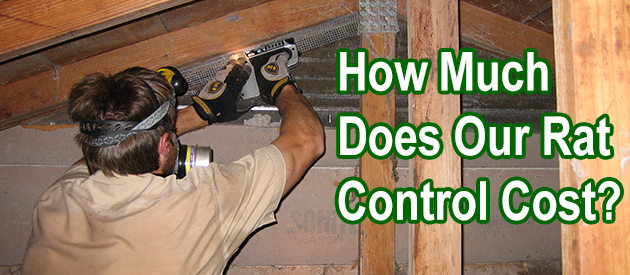Salt Lake County, Salt Lake City Rat Control Situation:
My neighborhood has a rat problem and the town has hired someone who put traps on everyone's property. I'm scared to death for the stray cats, raccoons, snakes and other predators of rats. How can I get them to understand this is a BIG mistake?!
I HAD A FEW GUYS THAT CAME OUT TO MY HOME IN SALT LAKE CITY. TOLD ME WHERE THEY WERE GETTING IN AT LEAST THE PLACES I COULDNT LOCATE, I WIRED THEM OFF. I HAVE SET TRAPS IN THE ATTIC W/ SLIM JIMS. I AM ONLY CATCHING LITTLE MICE NOT THE RATS I KNOW ARE UP THERE. THEY SOUND LIKE HORSES. I CANNOT REACH THE AREAS THAT THEY ARE IN AS THEY ARE TRAVELLING IN THE SOFFETS, KNOWING THEY TRAVEL THE ATTIC THEY WILL COME TO THE TRAPS W THE FOOD. BUT THIS HAS BEEN GOING ON FOR 2 MOS NOW AND I HV TO STOP THIS .. NOW !!! DO YOU HAVE ANY SUGGESTIONS AS FAR AS USING ANYTHING OTHER THAN SNAP TRAPS AND POISON WHICH THEY HV FIGURED OUT ARE POISON .. I HV EVEN GONE AS FAR AS CHOPPING UP THE BLOCKS W CAT FOOD. I HAD USED LIVE TRAPS, BUT THE DAMN THINGS WERE FIGURING OUT HOW TO GET OUT .. LITERALLY EATING THE BAIT AND OUT OF THE TRAP OVER NIGHT !! I REFUSE TO USE GLUE TRAPS I THINK THEY ARE INHUMANE AND SHOULD BE REMOVED OFF OF THE MARKET. I COULD CARE LESS IF YOU CAN USE OIL TO REMOVE THEM I HV SEEN RATS LOOSE BODY PARTS WHOLE THEY STRUGGLE TO GET OFF OF THEM OR TEAR SKIN. I WOULD APPRECIATE ANY HELP YOU CAN OFFER.
Hi David, My name is Tri Dao, I'm living in SLC Utah. I have rats in the attic and kids in the house. I went on line to check and read your website. I really impress with your experience and knowledge.I would like to ask you some question, My plan is remove the old blow-in insulation and put new one in. Do I still need to take care the rat problem first, then do the insulation or we can do 1 shot with the insulation and get rid of the rat too? Please help me with some solution in my case. Thanks in advance for your help and your services.
Salt Lake City Rat Control Tip of The Week
What To Do With A Rat After It Is Caught
After successfully catching a rat, people are often faced with the issue of what to do next. There is more to removing rats in your home than just catching it. If you have caught a rat in your home, there are certain things you will have to consider before going ahead with any activity.
The first thing you will have to consider if you caught a live rat is whether to relocate the rat to somewhere far away from your home or kill it. Secondly, you will have to figure out the best way to handle the rat without having any close contact with it, so as not to put your health at risk. Lastly, you will have to make plans on how to thoroughly disinfect your home.
If you are sensitive to animals, the best way to handle this situation is to choose the humane way by relocating the rat somewhere far away from your home after catching it. But at the same time, you need to understand the fact that the rat might not survive in the new environment you intend to introduce it to. Rats are habitual and are usually accustomed to living in the environment they grow up in. When you relocate any rat you caught, it will find it difficult to feed in the new environment. In most cases, these rats don't usually survive more than a few days.
On the other hand, if you have decided to kill the rat after trapping it, it is best to kill it fast and quickly. The best way to do this is to use either a blunt object that is firm and heavy or use a fire weapon.
While doing all of these, you need to protect yourself as much as you can to avoid getting in contact with diseases and pathogens. To do this, wear a pair of gloves while handling the rat and dispose of them immediately after use.


